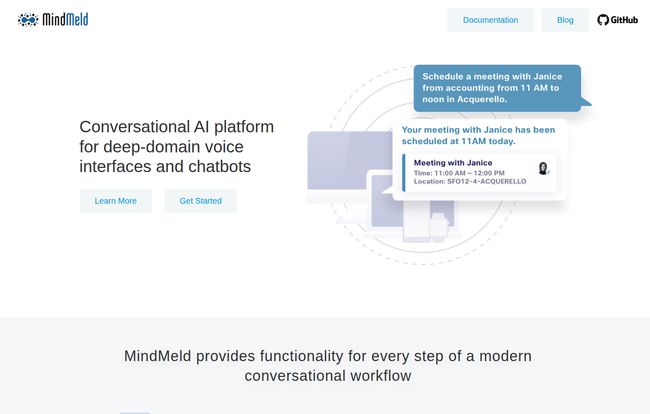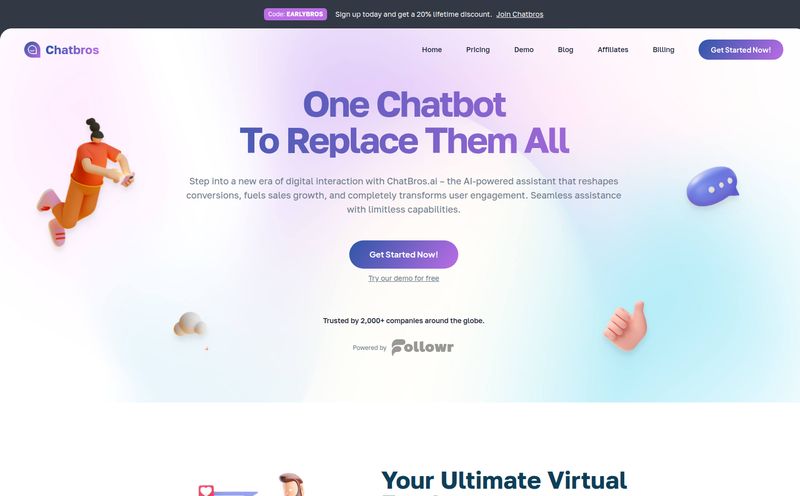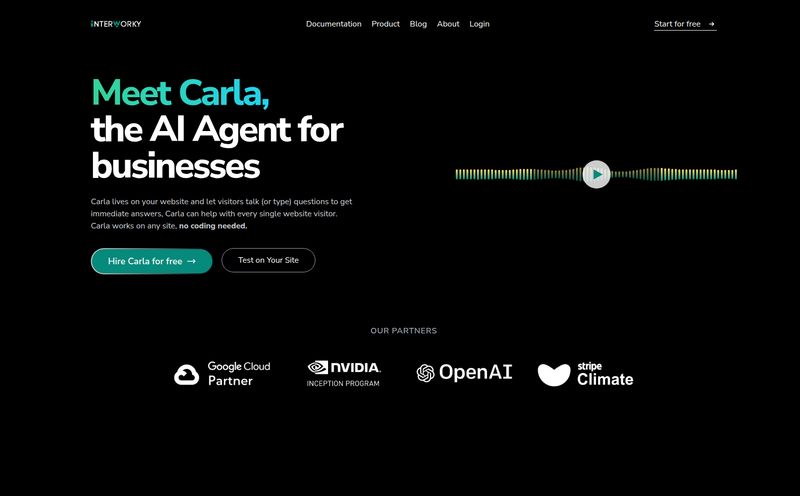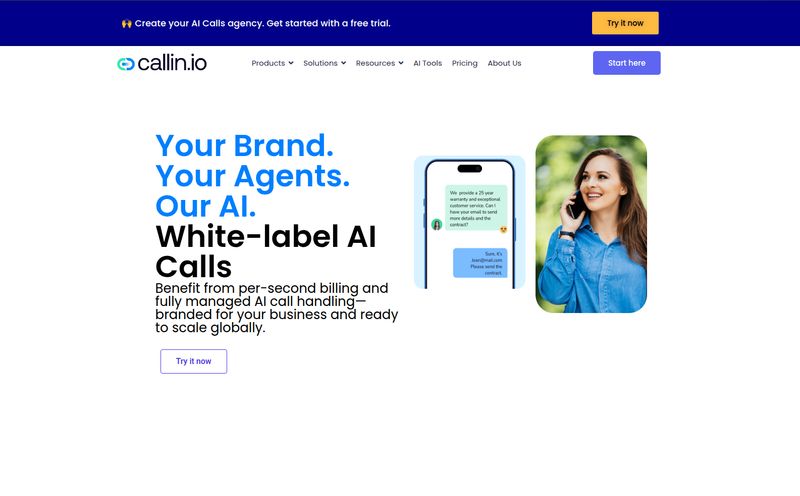Every now and then in the SEO and dev worlds, a tool pops up that gets you genuinely excited. You see the feature list, the big name behind it, and you think, “This is it. This is the one.” For a lot of us in the conversational AI space a few years back, that tool was MindMeld.
Backed by the Goliath that is Cisco and offered up to the community as open-source, MindMeld felt like a gift. It promised a professional-grade platform for building the kind of smart, deep-domain chatbots and voice assistants we all dreamed of. But fast forward to today, and if you ask a new developer about it, you might just get a blank stare. So what gives? I decided to put on my digital archaeologist hat, do some digging, and figure out what MindMeld was all about, and more importantly, where it stands today.
What Exactly Was MindMeld Supposed to Be?
Let's get one thing straight: MindMeld wasn't your average, run-of-the-mill chatbot builder for slapping a simple widget on your website. No, this was the serious stuff. Cisco designed it as a comprehensive AI platform for creating deep-domain voice interfaces. Think of it less like a pre-fab shed and more like a complete workshop full of power tools for building a custom house. It was aimed at developers who needed to build assistants that could understand complex, industry-specific language, not just “What are your hours?”
The fact that Cisco, a massive enterprise tech company, decided to open-source it was a pretty big deal. It meant any developer, from a startup tinkerer to a corporate team, could get their hands on this powerful framework for free. The potential felt enormous.
The Full Conversational Engine
The real magic of MindMeld was its end-to-end approach. It wasn't just a single-trick pony; it provided the architecture for the entire conversational workflow. I've seen so many projects get bogged down because they have to stitch together five different services to make one coherent bot. MindMeld aimed to solve that.
The process was laid out beautifully, covering every critical stage:
- Knowledge Base Creation: This is the foundation. You feed the machine all the specific information and data relevant to its purpose. For a food ordering bot, this is your menu, ingredients, locations, etc.
- Natural Language Processing (NLP): This is the brain of the operation. MindMeld had sophisticated NLP models to understand what a user is actually asking, even with slang, typos, or weird phrasing. This is where most simple bots fall flat on their face.
- Question Answering: Once the bot understands the question, it needs to pull the right answer from its knowledge base. MindMeld’s architecture was built to handle this intelligently.
- Dialogue Management: This is the secret sauce that makes a bot feel less robotic. It maintains context over a multi-turn conversation, so you don't have to repeat yourself. It remembers what you said three questions ago. A true game-changer for user experience.

Visit MindMeld
Having all of this in one neat, open-source package was, frankly, awesome. It gave developers a solid, structured path instead of leaving them to wander in the wilderness of API integrations.
Blueprints to Get You Started Faster
Another thing I really liked was the concept of “Blueprints.” Starting a complex project from a completely blank slate is intimidating. MindMeld offered pre-built structures for common use cases like:
- Food Ordering
- Video Discovery
- Home Assistants
These weren't finished bots, but they were robust starting points. All the foundational intents, entities, and dialogue flows were already mapped out. I remember trying to build a video discovery bot once, and just classifying all the possible queries about actors, genres, and release dates was a monumental task. A blueprint like that would have saved me weeks of hair-pulling frustration.
The Good, The Bad, and The 404 Error
So, we have a powerful, open-source platform backed by a tech giant. What could possibly go wrong? Well, this is where the story takes a turn. Like any powerful tool, it had its own set of challenges, and one of them turned out to be fatal.
The Good Stuff
The upside was clear: total control. Being open-source, you could host it yourself, modify the code, and build truly custom logic without being tied to a subscription fee. And the Cisco name gave it a stamp of enterprise-grade credibility. You weren't just using some random person's GitHub project; this was built on solid engineering principles. The developer stories on their site showed it being used for everything from booking chatbots to agricultural water conservation. Cool stuff.
The Potential Pitfalls
But that power came at a cost. MindMeld required real technical chops. You needed to be comfortable with Python, machine learning concepts, and managing your own infrastructure. It wasn't for the marketing team to spin up over a lunch break.
The biggest issue, though, was its reliance on its parent. An open-source project, especially one this complex, needs continuous support and updates to stay relevant. And this leads us to the elephant in the room. When I went looking for the official documentation to refresh my memory, I was greeted by a stark “404 File not found” page on their GitHub Pages site. Ouch. In the tech world, a dead documentation link is like a tumbleweed rolling through a ghost town. It's a pretty clear sign that nobody's home.
So, Is MindMeld Dead? The Current Status
I hate to be the bearer of bad news, but yeah, it looks that way. While the main GitHub repository for MindMeld still exists, a quick look at its history tells the story. The last significant update was several years ago. In the AI world, that’s an eternity. New models, techniques, and entire architectures have emerged since then.
The news articles from places like TechCrunch and VentureBeat featured on its old homepage are from 2019, which places its heyday firmly in the past. It seems Cisco has quietly moved on, shifting its resources elsewhere, and leaving MindMeld as a fascinating but frozen-in-time artifact. It's a classic tale in the corporate open-source world. A company launches a project with great fanfare, but when internal priorities shift, the project withers on the vine without a strong independent community to carry it forward.
Alternatives for Today’s AI Developer
If you were excited by the promise of MindMeld, dont worry! The spirit of powerful, open-source conversational AI is alive and well. If you're looking for that same level of control and customization, the undisputed champion in the space right now is Rasa. It has a massive community, is actively developed, and follows many of the same core principles that made MindMeld so appealing.
For those who prefer a more managed platform (and are okay with less direct code-level control), there are always the big cloud players like Google's Dialogflow and the Microsoft Bot Framework. They offer incredible power without you having to manage the underlying infrastructure.
Frequently Asked Questions about Cisco's MindMeld
Was MindMeld free to use?
Yes, absolutely. MindMeld was released under the Apache 2.0 license, making it free, open-source software. You could download, modify, and deploy it without paying any licensing fees, though you would be responsible for your own hosting costs.
Who was MindMeld's target audience?
It was primarily for Python developers and data scientists who needed to build highly customized, complex conversational AI applications. It was not a no-code or low-code platform for beginners or marketers.
Can I still download and use MindMeld today?
Technically, yes. The code is still available on GitHub. However, I would strongly advise against using it for any new, serious project. It is unmaintained, uses outdated libraries, and lacks any form of official support. You would be on your own.
What did “deep-domain” mean for MindMeld?
It referred to the platform's ability to be trained to understand the specific jargon, entities, and intents of a particular niche or industry. For example, a medical bot that understands diagnoses and drug names, or a financial bot that understands stock tickers and trading terms—queries that would completely confuse a general-purpose assistant.
What was the main reason MindMeld failed to stay relevant?
The most likely reason is a shift in corporate strategy at Cisco. Without dedicated developers from its parent company to maintain and update the platform, and without a sufficiently large independent community to take over, the project simply became stagnant and was quickly surpassed by newer technologies.
Final Thoughts on a Faded Star
Looking back at MindMeld is a little bittersweet. It had so much promise—a powerful, thoughtfully designed framework for serious AI development, given to the world by a tech giant. It serves as a great case study on the lifecycle of corporate open-source projects. They can provide a massive boost to the community, but their longevity is never guaranteed.
It’s a good lesson for all of us in this space: the best tool isn't just the one with the most features, but the one with the most active, vibrant community behind it. The AI landscape moves at a blistering pace, and even the most brilliant projects can get left behind if they stand still. Time to see what's next!
Reference and Sources
- MindMeld's Official GitHub Repository: https://github.com/cisco/mindmeld
- A Modern Open-Source Alternative, Rasa: https://rasa.com/



